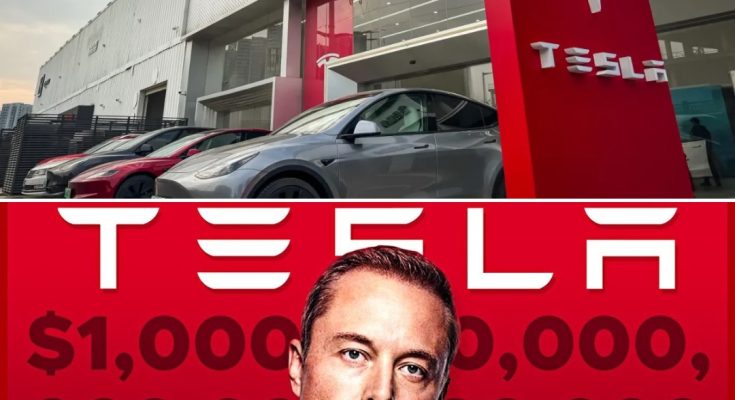In early 2022, Tesla reached an extraordinary milestone, surpassing a market capitalization of $1.2 trillion. This achievement not only solidified its position as one of the most valuable companies in the world but also marked the culmination of a series of strategic moves that propelled the electric vehicle (EV) maker to unprecedented heights.The surge in Tesla’s stock price was driven by several critical factors, including strong financial performance, global production expansion, growing consumer demand for electric vehicles, technological innovations, and strategic partnerships. Elon Musk’s vision for sustainable, autonomous transportation has captured the imaginations of investors and consumers alike, fueling a global interest in electric cars and technologies that seem poised to change the world.At the heart of Tesla’s remarkable ascent is its consistent and impressive financial performance. The company’s revenue skyrocketed, reaching approximately $53.8 billion in 2022, up from $31.5 billion the previous year. This robust growth was largely driven by Tesla’s increasing production and deliveries of electric vehicles, despite the challenges presented by supply chain disruptions and global economic uncertainties.Not only did Tesla manage to generate substantial revenue, but it also increased its profit margins, showing that it could produce vehicles at a competitive cost. This financial success attracted investors looking for exposure to a rapidly growing company in the electric vehicle market, which they saw as the future of the automotive industry.Tesla’s expansion of production capacity has also played a pivotal role in driving its valuation upward. The company has aggressively expanded its manufacturing footprint by building new Gigafactories in key regions, including Texas and Berlin. These new facilities have significantly boosted Tesla’s ability to scale production, reduce delivery times, and streamline its supply chain, positioning the company to meet growing demand for its electric vehicles.The establishment of these Gigafactories not only increased Tesla’s global manufacturing output but also enhanced its competitiveness, enabling it to capture a larger share of the rapidly expanding EV market. Tesla’s ability to scale production is one of the reasons why investors remain confident in its long-term growth prospects.Another key factor behind Tesla’s rise is the growing consumer demand for electric vehicles. In recent years, consumers have increasingly turned to electric cars as an environmentally friendly and sustainable alternative to traditional gasoline-powered vehicles. Tesla, with its lineup of affordable and premium models, has become the leader in this shift toward green transportation.The Model 3, in particular, has seen massive success, with millions of units sold worldwide. Tesla’s commitment to reducing carbon emissions and offering energy-efficient solutions has resonated with consumers who are becoming more environmentally conscious. As governments across the globe introduce stricter emissions regulations and offer incentives for EV adoption, Tesla stands to benefit from this growing demand.Furthermore, Tesla’s innovations in autonomous driving technology have added another layer of appeal to its vehicles, making them more attractive to both consumers and investors. The company’s Full Self-Driving (FSD) software, while still being refined, has garnered significant attention for its potential to transform the way people think about transportation.The idea of a fully autonomous car is no longer just a futuristic concept; it’s becoming a reality thanks to Tesla’s relentless focus on artificial intelligence and machine learning. Investors view Tesla as not just a carmaker but a technology company that is positioning itself as a leader in the future of autonomous transportation. The autonomous driving space is highly competitive, but Tesla’s advancements in FSD have solidified its place at the forefront of this next-generation technology.In addition to its technological innovations, Tesla’s ability to form strategic partnerships has been crucial in boosting its market valuation. One of the most notable partnerships was with rental car giant Hertz, which placed an order for 100,000 electric vehicles, signaling the widespread acceptance of EVs in the commercial sector. This deal not only provided Tesla with a massive boost in sales but also further validated the mainstream appeal of electric cars.Tesla’s expansion into international markets has also helped diversify its revenue streams and reduce its reliance on any single market. The company’s growing presence in China, one of the largest automotive markets in the world, has been a critical factor in its global success. Tesla’s ability to expand into new regions while maintaining its core mission of sustainability has positioned it as a truly global brand.Investor sentiment played a significant role in driving Tesla’s rise to a $1.2 trillion valuation. The company’s inclusion in major stock indices, such as the S&P 500, and its regular coverage in financial media have kept it at the forefront of investor consciousness. Tesla’s stock has become a favorite among retail investors, with its meteoric rise fueled by the public’s excitement over Musk’s visionary plans.Many investors view Tesla as a high-growth company that will continue to expand its market share in the electric vehicle space, particularly as governments around the world push for cleaner, greener technologies. The company’s success has sparked a broader interest in electric vehicles, and Tesla has become the face of the global EV revolution.However, Tesla’s rapid growth and high market valuation have not come without their challenges. While the company has revolutionized the automotive industry, it faces increasing competition from both traditional automakers and new entrants in the electric vehicle market. Companies like Ford, General Motors, and Volkswagen are all investing heavily in electric vehicles, and start-ups like Rivian and Lucid Motors are making their own bids for a piece of the EV market.While Tesla remains a leader in the sector, it must continue to innovate and differentiate itself to maintain its dominance. The pressure to sustain high production levels, increase profitability, and develop new technologies is immense, and Tesla’s ability to navigate these challenges will determine its future growth.Additionally, Tesla’s production capabilities have been tested as the company has faced delays and challenges in ramping up production to meet its ambitious targets. The global chip shortage and supply chain disruptions have impacted Tesla’s ability to produce vehicles at the pace it needs to maintain its market leadership.While Tesla has managed to weather these storms better than many competitors, it will need to address these issues if it wants to continue its upward trajectory. The company’s ability to scale production efficiently and manage its supply chain will be crucial to its long-term success. Despite these challenges, Tesla’s future remains promising. The company is well-positioned to capitalize on the growing demand for electric vehicles and autonomous technology. Its commitment to innovation and sustainability has made it a leader in the green energy movement, and its continued advancements in AI and battery technology will likely secure its position as a dominant player in the automotive industry. However, as the EV market becomes more competitive and regulatory pressures increase, Tesla will need to continue evolving and adapting to maintain its edge.In conclusion, Tesla’s rise to a $1.2 trillion valuation is a testament to the company’s innovation, leadership, and vision for the future of transportation. The factors behind Tesla’s success, including strong financial performance, global production expansion, and groundbreaking technological advancements, have propelled the company to the forefront of the electric vehicle industry.While challenges remain, Tesla’s ability to adapt and continue pushing the boundaries of what is possible in the world of sustainable transportation positions it for continued growth. The coming years will be crucial in determining whether Tesla can maintain its dominant position or if new competitors will rise to challenge its leadership. Regardless of the outcome, Tesla’s journey has already reshaped the automotive landscape and has set the stage for the future of electric vehicles and autonomous driving.
Latest Update: Tesla’s $1,2,000,000,000,000,000,000 leap is setting new standards in the electric vehicle industry—this could be the future of transportation

Block 1


